Why the Catholic Church is losing Latin America, and how it’s trying to get it back
The United Pentecostal Church in Bogotá is busy on Sundays. As the hall fills up, prams are parked neatly by the entrance. As more families drift in, the band strikes up a song with floor-filling disco beat. “The Lord is great”, sings the bass-playing pastor, as a bank of television screens relays the action on stage to the stragglers at the back. Together, the congregation lift their hands in the air while a boy, who looks no more than about 7 or 8, hammers out the rhythm on an oversized set of congas.
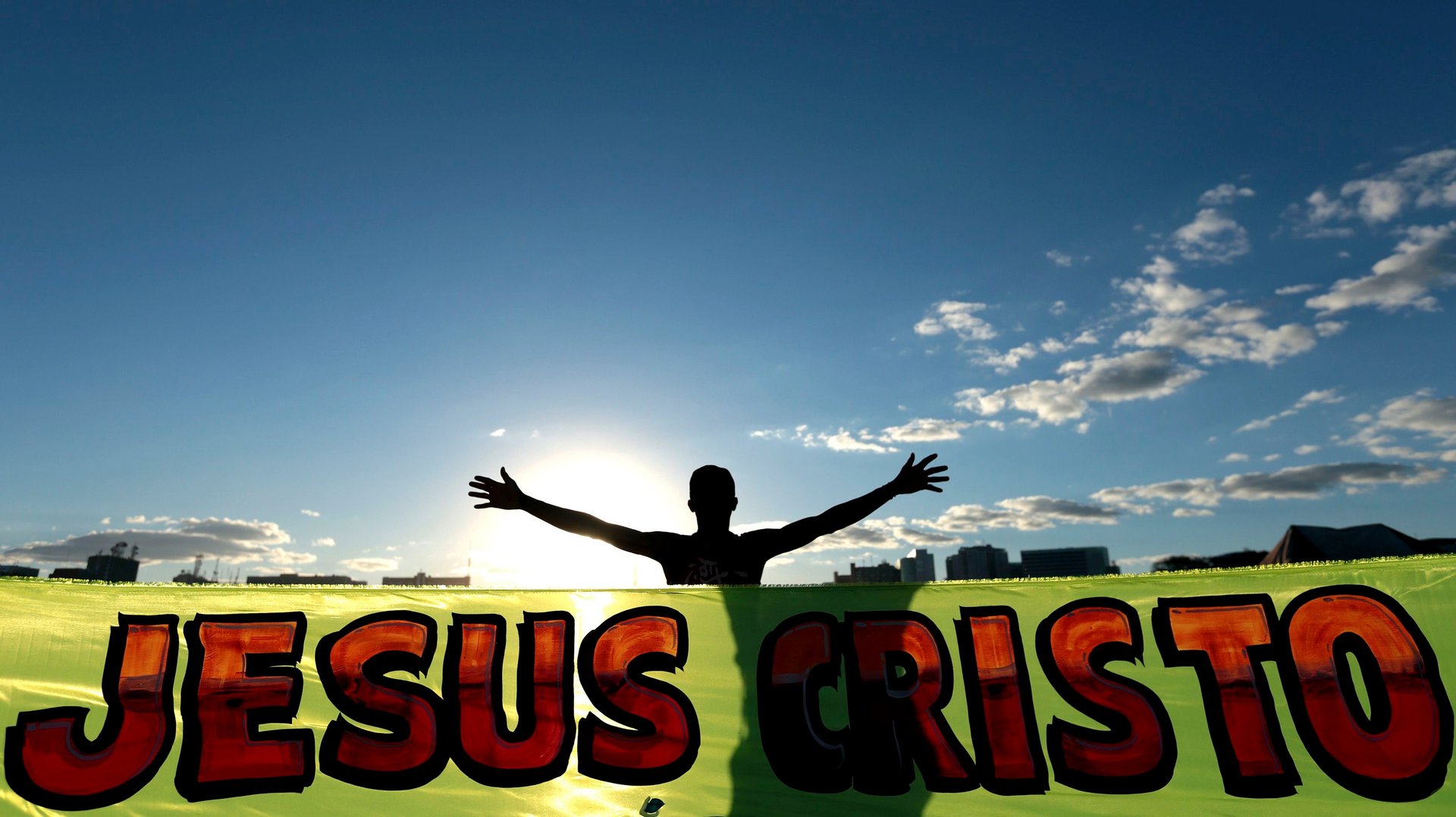

The United Pentecostal Church in Bogotá is busy on Sundays. As the hall fills up, prams are parked neatly by the entrance. As more families drift in, the band strikes up a song with floor-filling disco beat. “The Lord is great”, sings the bass-playing pastor, as a bank of television screens relays the action on stage to the stragglers at the back. Together, the congregation lift their hands in the air while a boy, who looks no more than about 7 or 8, hammers out the rhythm on an oversized set of congas.
A religious revolution is underway in Latin America. Between 1900 and 1960, 90% of Latin Americans were Catholics. But in the last fifty years, that figure has slumped to 69%, according to a recent survey by the Pew Research Center (from which most of the data in this article are taken). The continent may still be home to 425 million Catholics—40% of the world’s total—but the Vatican’s grip is slipping.
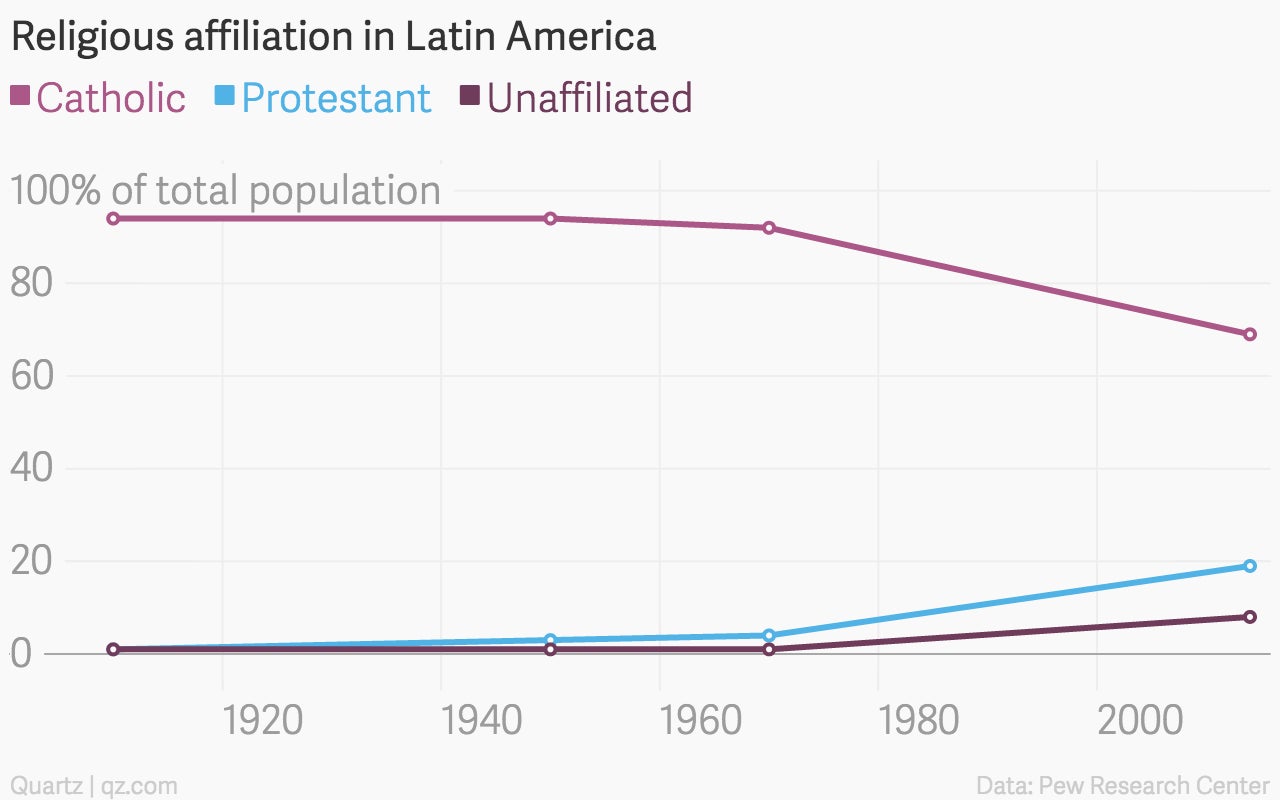
In recent decades, millions of Catholics have abandoned the church. Nearly one in five Latin Americans now consider themselves Protestant. Within the course of a single generation, the religious landscape has been radically reshaped. In Colombia, three-quarters of Protestants today say they were raised as Catholics, while 85% say they were baptized in the Catholic Church. Other Catholics are drifting away from organised religion altogether. While only 4% of Latin Americans say they were brought up without being affiliated to a particular church, twice as many are unaffiliated today.
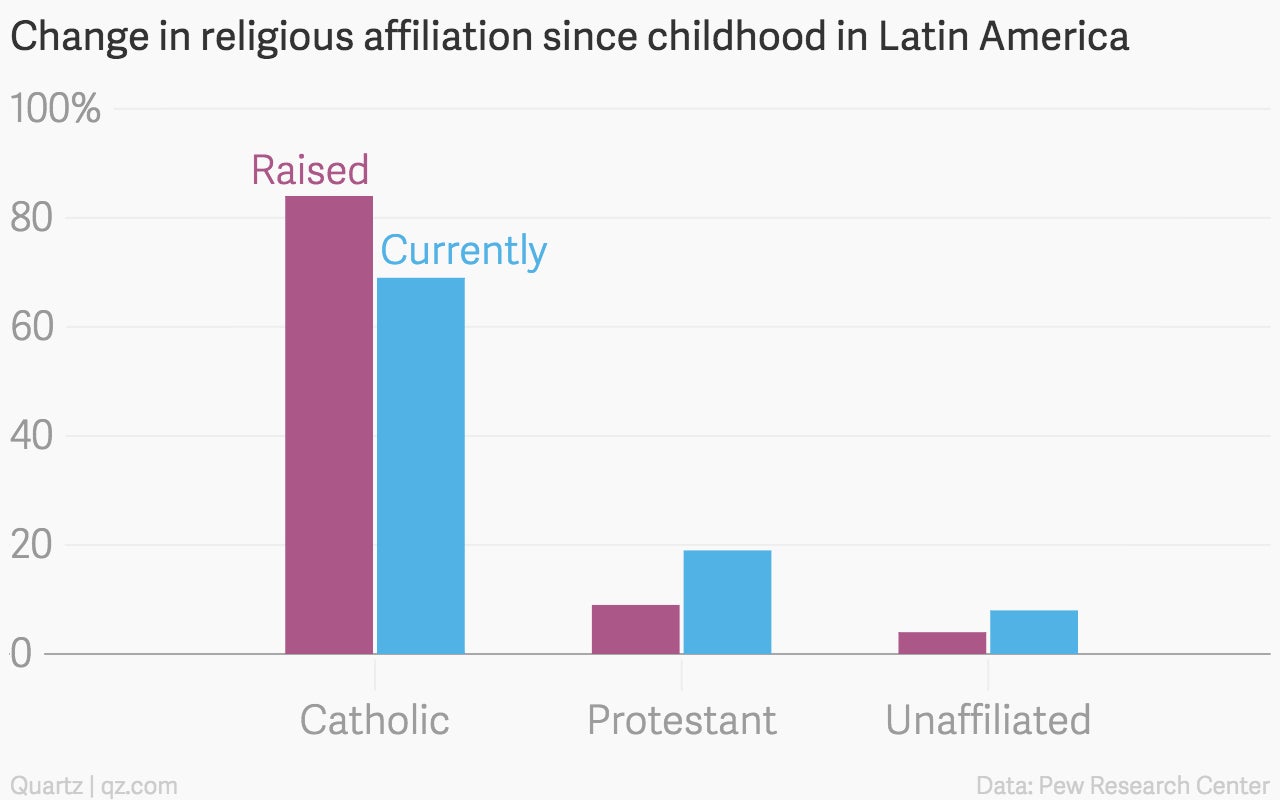
A vibrant new religious economy has taken root across the region. Prospective worshippers can choose between more religious “products” than ever before. Presbyterians, Methodists, Baptists and Pentecostals compete with Mormons and Jehovah’s Witnesses for new followers. African diaspora religions like Candomblé in Brazil and Vodou in Haiti are also flourishing, while New Age beliefs are now more popular in Latin America than in the US.
The tidal wave of Pentecostalism
The first Pentecostal missionaries arrived in Latin America in the early 20th century. According to Andrew Chesnut, chair in Catholic Studies at Virginia Commonwealth University, some of the first converts in Brazil were lepers, who were attracted by the movement’s emphasis on faith healing. Over the decades, Pentecostalism has emerged as one of the most successful “brands” in the religious marketplace. Two-thirds of all Protestants in Latin America now identify as Pentecostal. “In only a century of operation in Latin America, Pentecostalism has more successfully Latin-Americanized than Catholicism has in five centuries”, argues Chesnut.
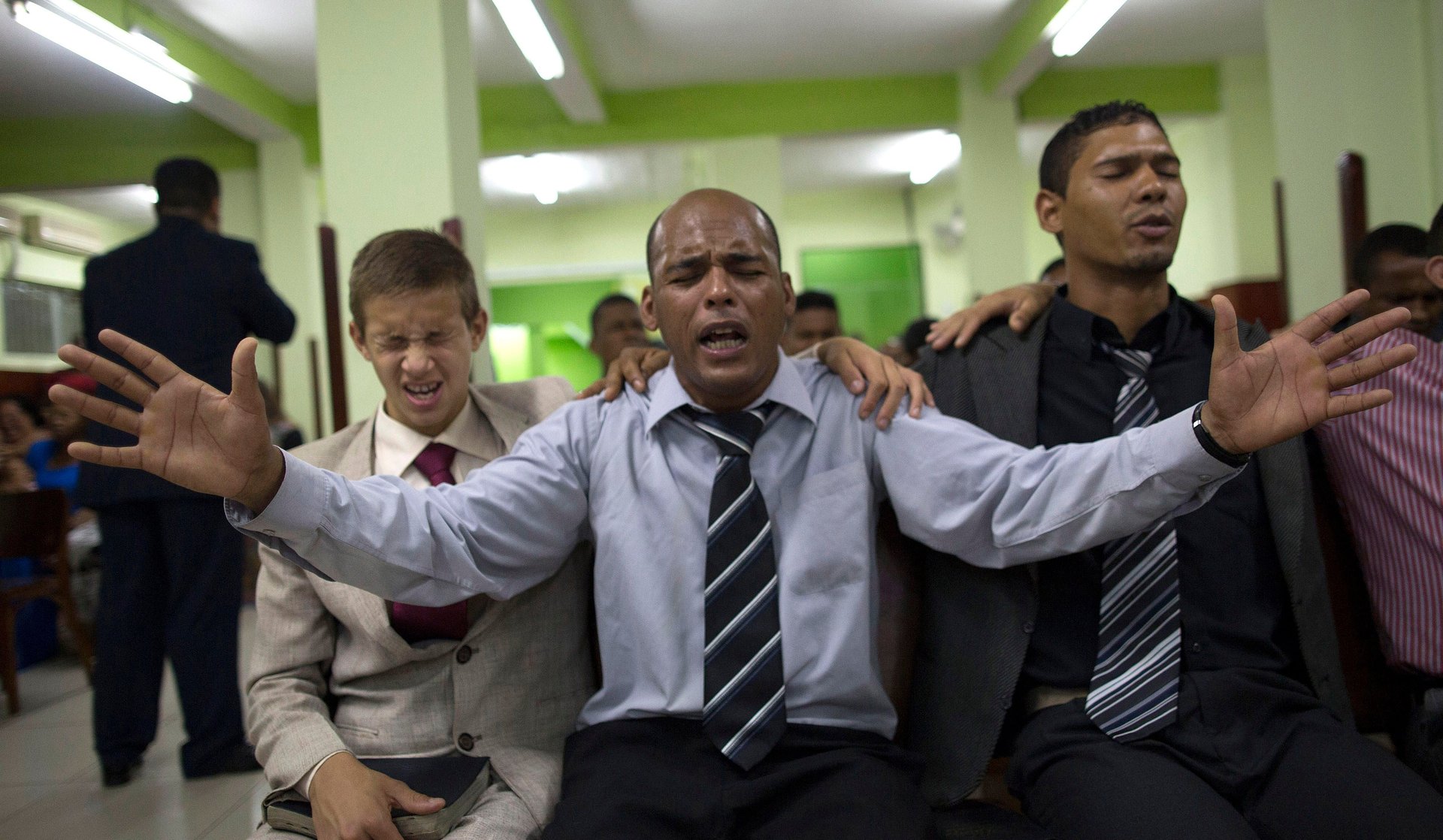
Pentecostalism has borrowed from and adapted local traditions and customs. Its priests are more often drawn from the local community, says Chesnut, and tend to look and sound much more like their congregation than Catholic priests, who are often outsiders. Pentecostal churches particularly appeal to rural-to-urban migrants, who have often left their loved ones behind. “Congregational religious life is most attractive for those who have the least family”, says David Stoll, an anthropologist at Middlebury College in Vermont. He argues that the church community acts as an effective surrogate to new arrivals.
In their well-attended services, worshippers often receive “gifts from the Holy Spirit”, which include speaking in ton gues and miraculous healings. Followers are encouraged to develop a personal relationship with Jesus and are expected to spread the word of the gospel. “I grew up two blocks from the local Catholic Church”, Libardo Mendez, a former Catholic member of the United Pentecostal Church in Bogotá, told Quartz. “It taught religion, but it never taught evangelism. Unless you’re born again, you’ll never see the kingdom of God.”
According to Pew’s survey, the most popular reason for joining a Pentecostal church is a desire for a more personal relationship with God. The widespread belief in the power of faith healing also appeals the poor and the sick, for whom health insurance is often unaffordable. Others join at a time of personal crisis, attracted by the prospect of deliverance from addiction to alcohol or drugs.
The empire strikes back
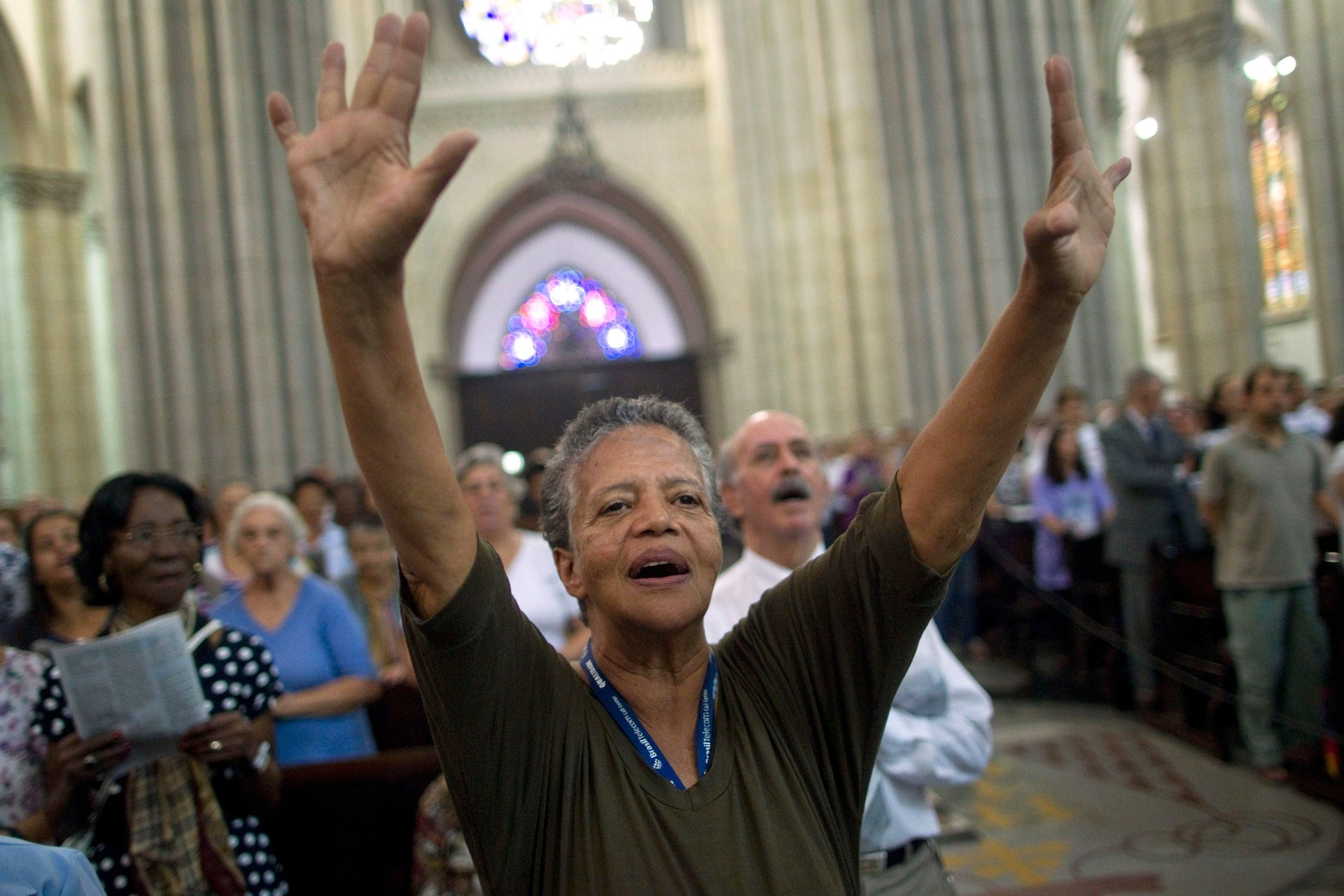
The Pentecostals’ challenge to Catholic hegemony was unprecedented. By the 1970s the church was a state of panic over what it referred to as the “invasion of the sects”. In 1978 Latin American bishops warned that 2,000 Catholics were leaving the church every day. In 1992 Pope John Paul II ordered them to “defend” their flock against the “rapacious wolves” of Protestantism “causing division and discord”.
But the Vatican has struggled to stem the exodus. Exacerbating the problem is an historical shortage of priests. In 1999 the Vatican released figures showing that Latin America had only 18% of the world’s priests, despite being home to 42% of the world’s Catholics. In 2012 there were reportedly just 300 priests in Cuba, or one for every 19,000 followers.
Catholicism’s most successful strategy in its battle with Pentecostalism has been to copy it. The Catholic Charismatic Renewal originated in 1967 in the US, co-opting some of the most successful elements of the evangelical movement. Like Pentecostalism, it has thrived in Latin America.
The movement seeks to revitalise Catholicism by putting the Holy Spirit at the centre of worship. Like their Pentecostal cousins, charismatic Catholics often speak in tongues, believe in faith healing and exorcism, and use modern styles of music to spread their message. Unlike the Pentecostals, however, they retain a strong devotion to the Virgin Mary and the saints.
Church authorities soon realised that the charismatic movement represented their best hope of halting the tide of defections. By 1986 it had received episcopal approval in every country in Latin America. Today it is the largest, fastest-growing wing of the Catholic church, with over 300 million followers worldwide, providing an effective riposte to Pentecostalism’s continuing popularity. Across Latin America, sizable proportions of the Catholics in each country now consider themselves charismatic; in Brazil, Panama, Honduras, Dominican Republic and El Salvador more than half have joined the movement.
Many of them are attracted by celebrity priests, who regularly fill soccer stadiums with the charismatic message. Father Marcelo Rossi, a former aerobics instructor, sells millions of records throughout Brazil and performs to crowds of thousands. In Colombia, Padre Mauricio Cuesta, known as Padre Bala (or “Father Bullet”) encourages his congregation to dance salsa during his services. The charismatics have also captured the airwaves: The majority of religious radio stations in Brazil are now run by the movement.
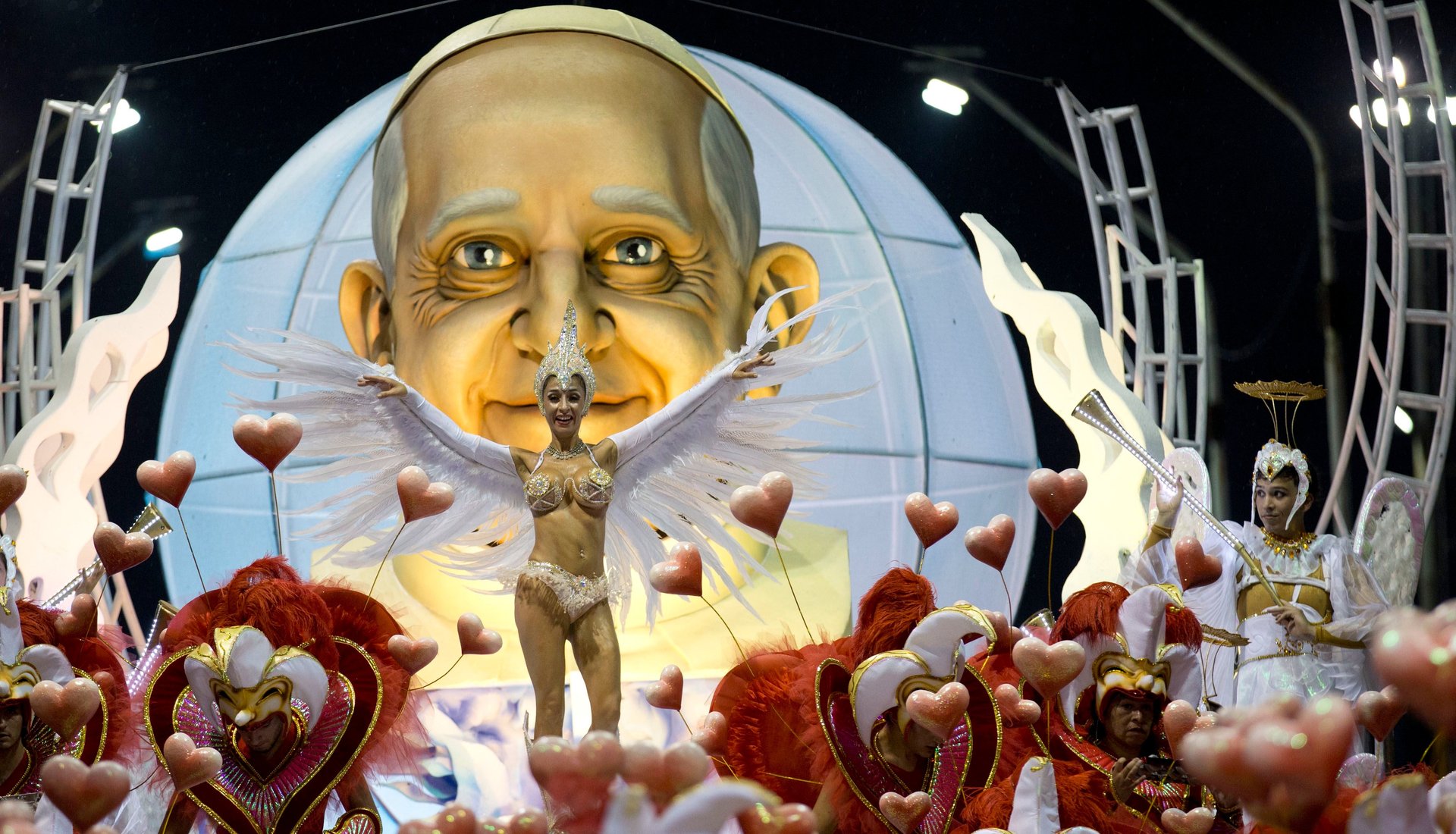
In March 2013, Jorge Mario Bergoglio, from Argentina, became the first Latin American pope. Bergoglio had initially been sceptical of the charismatic movement, comparing its services to “samba lessons”, but changed his mind after witnessing it at first hand. As Pope Francis I, he has embraced the movement with much greater enthusiasm than his predecessors. In July 2013 he took part in the charismatic-organised World Youth Day on Rio’s Copacabana beach. A year later he addressed 50,000 worshippers at a football stadium in Rome, announcing that he believed that charismatics had received “a great gift from the Lord”.
Pope Francis is enormously popular throughout Latin America. Eight out of ten Catholics view him positively. But despite the success of the charismatic movement, it will be hard for him to slow, or reverse, the tide of Catholics abandoning the church. Although Brazil is currently home to the largest number of Catholics in the world, by 2030 they may find themselves in a minority for the first time. “We’re really looking at an inexorable trend here”, says Andrew Chesnut. “Unless there’s major reform, I don’t see a reversal at this point.”
Such a “major reform” could include letting priests marry or allowing women to join the clergy. That might address the acute shortage and help keep more Latin Americans in the church. But such measures also risk upsetting more conservative Catholics, particularly those in Africa and Asia, and putting the church in the impossible position of having to decide which region’s loyalty matters more.
Without such reforms, the charismatic movement still represents the Catholic church’s best hope of blunting the Pentecostal charge. But it’s running out of time.